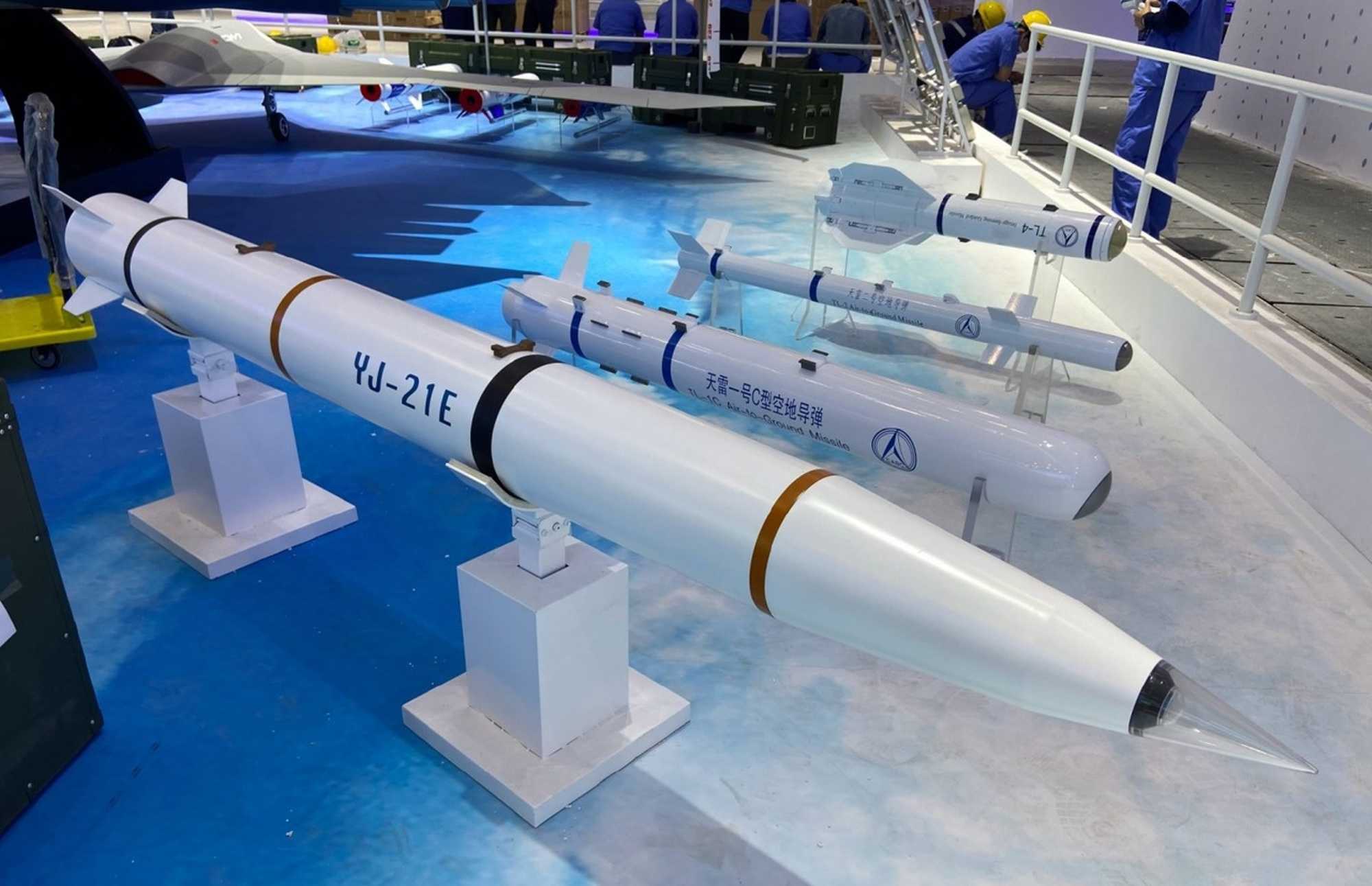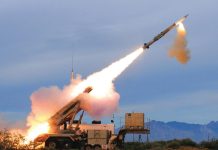China has finally unveiled its ‘YJ-21,’ or the ‘Eagle Strike 21’ shipborne hypersonic anti-ship missile that has long been shrouded in mystery. The missile has been put on display at the ongoing Zhuhai Air Show.
The homegrown YJ-21 missile is known to be the world’s first carrier-based anti-ship ballistic missile.
Ukraine’s ‘Aircraft Killer’ Missiles Are Raining Hell On Russian Fighters Jets; Experts Call Them ‘Star Of The Show’
With Over 2000 Pilots Killed, China Is Struggling With Its Aviators Despite Three Aircraft Carriers & An Enormous Air Force
The missile was displayed alongside the two Tianlei (TL) series air-to-surface anti-ship missiles. It was marked as ‘YJ-21E’, in which the ‘E’ appears to indicate the export variant of the missile.
The YJ-21 is considered one of China’s most lethal weapons, hidden from public view until now. In April, the People’s Liberation Army (PLA) Navy released a video showing a Type 055 cruiser firing a previously unseen missile which was believed to be the YJ-21.
The Chinese PLA Navy for the first time showed footage of the launch of a new hypersonic anti-ship cruise missile from a Project 055 destroyer. pic.twitter.com/Tdb6cz3UNR
— rohan panchigar (@rohanpanchigar) April 19, 2022
From what could be observed from the video clip, the missile had small fins and a bi-conic nose, and its small control surfaces indicated that it is not a surface-to-air missile (SAM), considering such a missile would need to be highly maneuverable to engage a high-speed airborne target.
The YJ-21E displayed at this year’s edition of the biennial Zhuhai Air Show appears similar in shape and dimensions to the one fired from the Type 055 cruiser in April.
The YJ-21 Anti-Ship Ballistic Missile
While the performance specifications of the YJ-21 remain unknown, its range is believed to be somewhere between 1000 to 1500 kilometers. According to the South China Morning Post, the missile has a terminal velocity of Mach 10 – ten times the speed of sound.
In the video in April, the YJ-21 was seen cold-launched from the Type 055’s stern vertical launch system (VLS), which means the missile was expelled from the launcher cell using gas before its engine ignited after it was airborne and clear of the ship.
Black Sea To Turn Red? Russian Navy Wants Upgrades & Up Gunning Of Black Sea Fleet To Tackle Ukraine’s Killer USVs
Chinese VLS cells can accommodate missiles up to nine meters long, with a diameter of 850 millimeters, so the YJ-21 must be within these parameters.
The YJ-21 is believed to have been developed from the Chinese CM-401 short-range hypersonic anti-ship ballistic missile unveiled at the Zhuhai Air Show 2018. It is a solid-fueled short-range ballistic missile (SRBM) comparable to Russia’s Iskander SRBM that has been used in the ongoing Ukraine war.

The missile’s manufacturer, China Aerospace Science and Industry Corporation Limited (CASIC), had stated that the missile could be fitted on warships in the future. However, reports have pointed out that the YJ-21 has a large booster compared to the CM-401.
The missile has a range of at least 180 miles (roughly 290 kilometers), and it flies in a ‘skip-glide’ flight pattern, which means that it flies vertically straight up initially and then skips off the atmosphere one or more times after re-entering turning its downward momentum into horizontal motion.
In addition to the Type 005, there was also an image of a PLA Air Force (PLAAF) H-6N bomber carrying a missile that appears to be related to the YJ-21.
Wow ? and as if the new Eagle Strike 21 (YJ-21) AShBM was not enough, also the so far clearest image of a PLAAF H-6N carrying the huge ballistic missile!
(via a video via @lqy99021608) pic.twitter.com/R0jKlH0uBd
— @Rupprecht_A (@RupprechtDeino) April 19, 2022
Most importantly, the YJ-21 is part of the Chinese arsenal of missiles meant to take out enemy aircraft carriers. It is an ultra-fast missile with an unpredictable flight path, capable of penetrating directly through an aircraft carrier’s flight deck and eliminating it quickly.
China’s Focus On ‘Carrer-Killer’ Missiles
Beijing has long been concerned about the ability of American aircraft carrier groups to travel across the world and exert military dominance.

The US Navy plans to maintain a fleet of 12 nuclear-powered aircraft carriers. In contrast, China has only three aircraft carriers, with the fourth in the pipeline.
As EurAsian Times discussed recently, the capability to destroy an aircraft carrier is at the heart of China’s strategy to counter any US military action off its eastern coast.
Furthermore, EurAsian Time also reported about a target range in Xinjiang’s remote Taklamakan desert with targets built in the shape of a Ford-class US aircraft carrier and at least two Arleigh Burke-class destroyers.

These targets were meant for the Chinese military to practice precision anti-ship attacks with the land-based Dong Feng-21D (DF-21D) missiles, also known as the ‘carrier killer’ missile, with a range of 1,500 kilometers.
China Builds Missile Targets Shaped Like U.S. Aircraft Carrier, Destroyers in Taklamakan Desert
The full-scale outline of a U.S. carrier & two Arleigh Burke-class destroyers are part of the target range, built in the Ruoqiang region in central China.https://t.co/CH8fGbVXBH pic.twitter.com/wYMKdqlVvS
— Indo-Pacific News – Geo-Politics & Military News (@IndoPac_Info) November 7, 2021
The US Navy, on the other hand, does not currently have an anti-ship ballistic missile like the ones operated by China. The service is collaborating with the US Army on the Conventional Prompt Strike (CPS) hypersonic missile system, which can be launched from land, ship, and submarine platforms.
While the Tomahawk Block Va and Vb cruise missiles used by the US Navy have an advantage in terms of range, as these missiles can engage targets at around 1800 kilometers, they are subsonic and, therefore, easier to intercept by air defense systems.
In March, a report by US Congressional Research Service about China’s naval capabilities highlighted the concerns of the top US military officials. It said that China’s stockpile of anti-ship ballistic missiles (ASBMs) could virtually block the US Navy from accessing an area of about a thousand miles off China’s coast.
- Contact the author at tanmaykadam700(at)gmail.com
- Follow EurAsian Times on Google News




